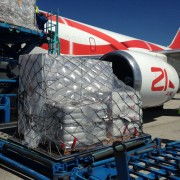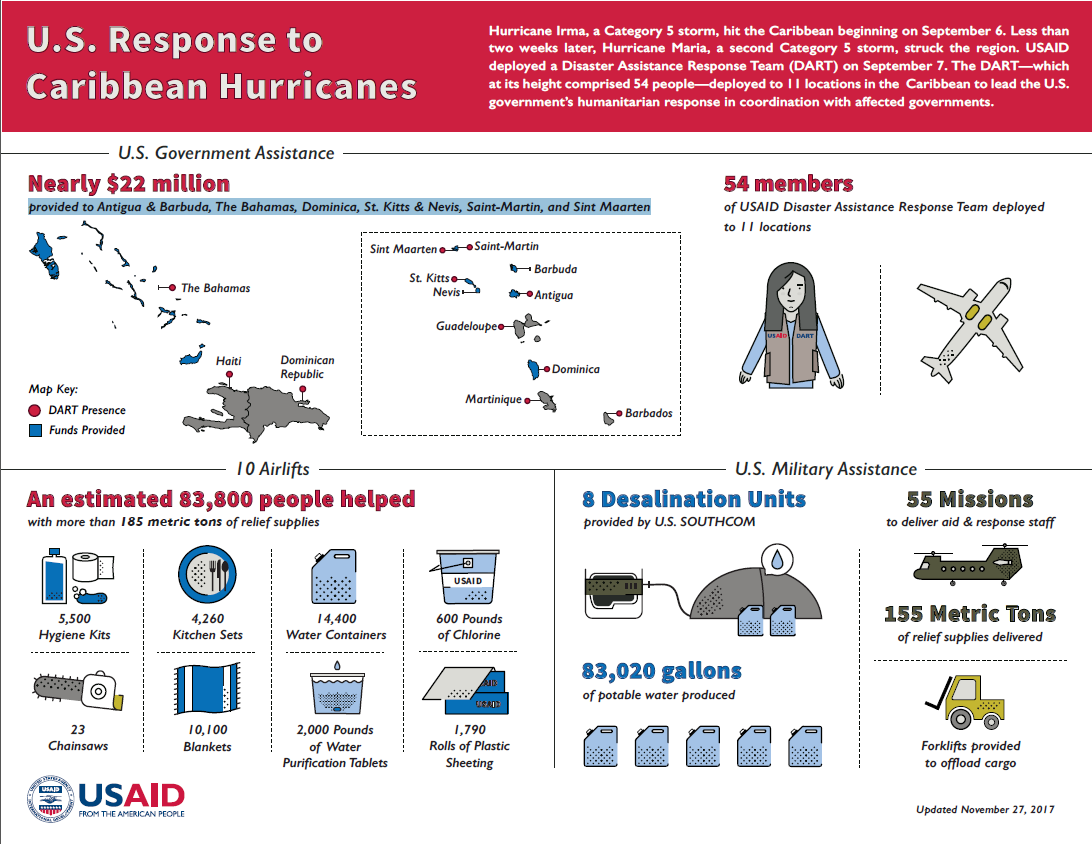Speeches Shim
Hurricane Maria passed directly over the island of Dominica on the night of September 18 as a Category 5 storm on the Saffir-Simpson Hurricane Wind Scale. Widespread communications outages have hampered efforts to verify conditions on Dominica, and initial reports indicate extensive infrastructure destruction and at least seven deaths. USAID/OFDA is providing an initial $100,000 to meet immediate humanitarian needs on the island and plans to deploy staff to Dominica as soon as possible.

Hurricane Irma — the strongest Atlantic hurricane on record — unleashed catastrophic rain, wind, and storm surges across the Caribbean, leaving a trail of devastation from Barbuda to Cuba. Here’s an inside look at USAID’s disaster relief efforts.
Hurricane Maria—a Category 5 storm on the Saffir-Simpson Hurricane Wind Scale—is forecast to affect the Leeward Islands beginning on September 18, according to the National Hurricane Center (NHC). The hurricane is forecast to bring sustained winds of 160 miles per hour (mph), 10–15 inches of rain, and storm surge of up to 9 feet to affected areas. The substantial rainfall is expected to trigger flash flooding and landslides, particularly on islands already saturated by rains from recent hurricanes Irma and Jose.
On September 15, a flight transporting more than 8 metric tons (MT) of USAID/OFDA-procured relief commodities—including blankets, hygiene kits, kitchen sets, plastic sheeting, and water containers—arrived on the island of Antigua. In coordination with USAID/OFDA partner Antigua and Barbuda Red Cross Society (ABRCS) and other relief actors, the Government of Antigua and Barbuda (GoAB) National Office of Disaster Assistance (NODS) will distribute the emergency relief supplies to hurricane-affected families sheltering in Antigua. To date, USAID/OFDA has provided relief commodities to benefit approximately 32,500 disaster-affected people in the Caribbean region.
On September 14, two flights transporting USAID/OFDA-procured relief commodities—including blankets, hygiene kits, kitchen sets, plastic sheeting, and water containers—arrived in Antigua and The Bahamas, respectively. The USAID/OFDA assistance will benefit a total of 32,500 disaster-affected people in the Caribbean region.


Comment
Make a general inquiry or suggest an improvement.